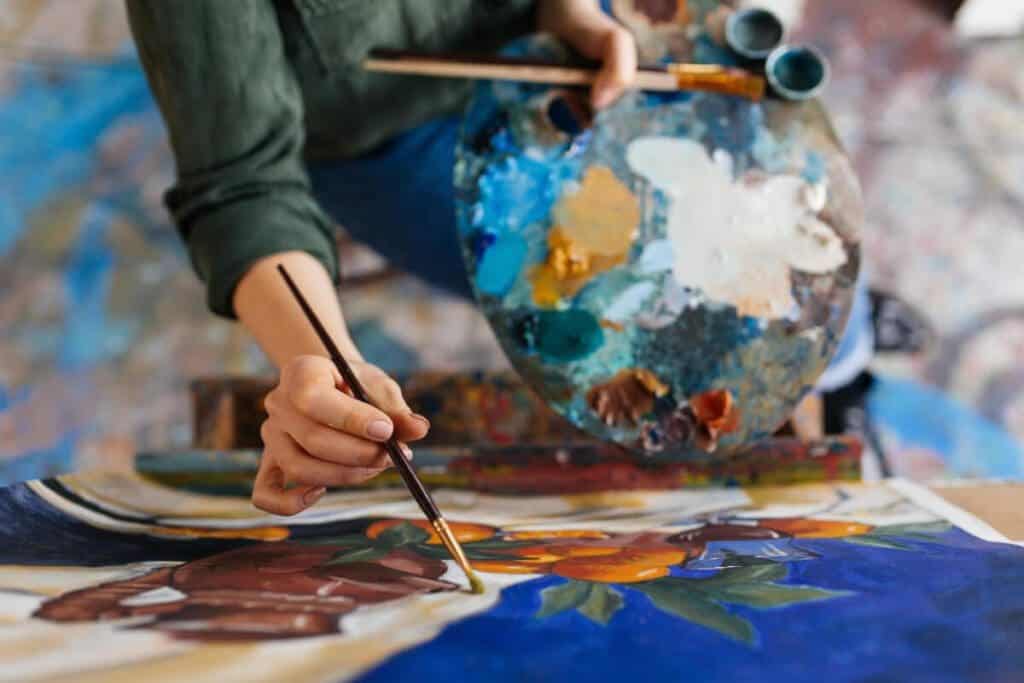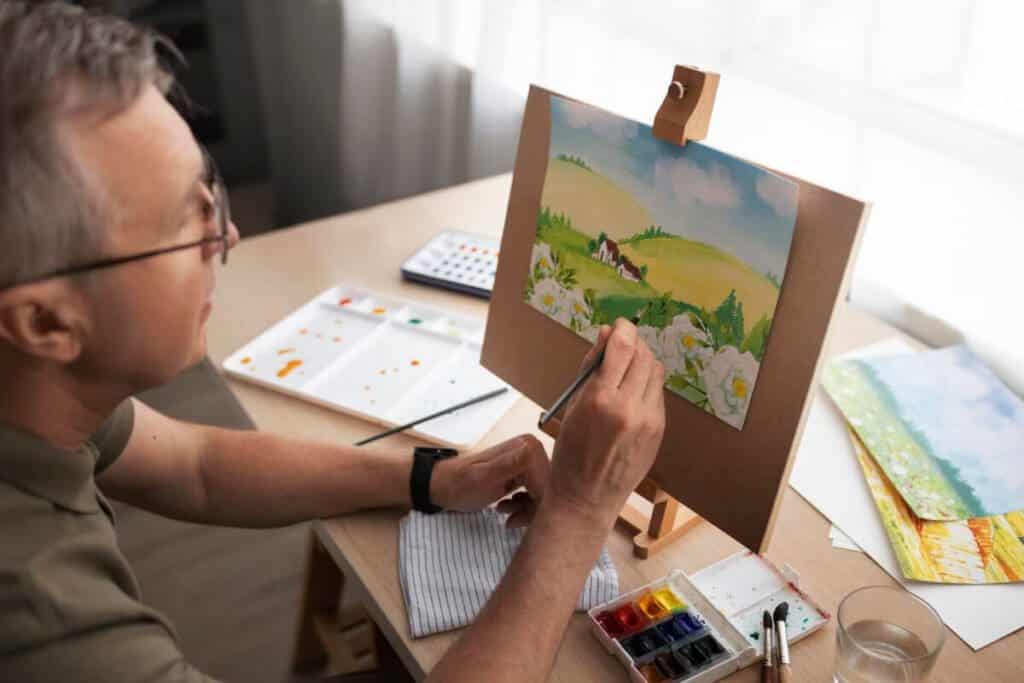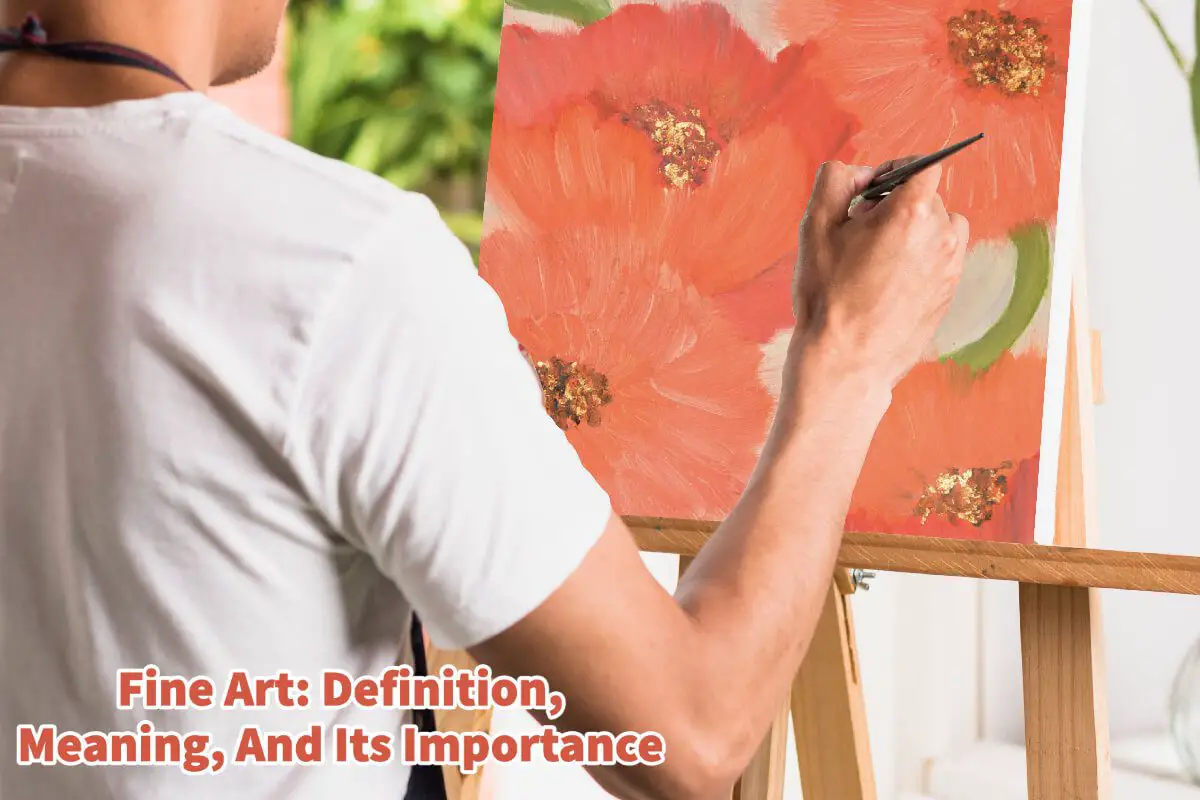The world of art is a realm of boundless creativity and diverse expressions. At the heart of this vast landscape lies the concept of fine art—a term that encapsulates artwork created for its aesthetic value and intrinsic beauty rather than for practical or utilitarian purposes
Fine art encompasses many forms, including painting, sculpture, printmaking, photography, and architecture. Read on as we will explore the definition and meaning of fine art, examine its historical significance, and discuss the ten compelling reasons why understanding fine art is essential for artists and art enthusiasts alike.
Table of Contents
- Fine Art: Definition, Meaning, And Its Importance For Artists And Art Enthusiasts
- Reasons For Understanding Fine Art
- Appreciation Of Aesthetic Beauty In Art
- Emotional Connection With Fine Art
- Cultural Understanding Of Fine Art
- Personal Expression And Growth And Art
- Artistic Inspiration And Fine Art
- Critical Thinking And Analysis Of Art
- Cultural Dialogue And Language Of Fine Art
- Historical Perspective And Fine Art
- Art Market And Collecting
- Artistic Legacy And Cultural Preservation
- Frequently Asked Questions
- Related Questions
Fine Art: Definition, Meaning, And Its Importance For Artists And Art Enthusiasts
Fine art encompasses a vast array of artistic forms, spanning from the captivating strokes of paint to the intricacies of sculpture, the intricate techniques of printmaking, the captivating lens of photography, and even the imaginative world of architecture.
Read on as we embark on an enlightening exploration of fine art’s definition and essence. We will delve into its profound historical significance, tracing its roots through the annals of time.
Furthermore, we will unravel ten compelling reasons why a deep understanding of fine art is paramount for artists and art enthusiasts passionate about the boundless realm of creativity.
Defining Fine Art
Fine art can be understood as a visual representation or expression of human imagination, skill, and creativity. It serves as a means of exploring beauty, emotion, and intellectual concepts.

Unlike applied arts, which have functional or practical aspects, fine art primarily involves evoking a sensory and emotional response, provoking thought, and stimulating the viewer’s imagination.
Fine art encompasses various mediums, techniques, and styles, allowing artists to convey their ideas and visions in a way that transcends mere representation.
A Historical Journey With Fine Art
The history of fine art is a tapestry woven with the threads of human civilization, reflecting the cultural, social, and artistic paradigms of different eras. From the cave paintings of Lascaux to the classical sculptures of ancient Greece, from the masterpieces of the Renaissance to the avant-garde movements of the 20th century, fine art has evolved alongside human progress, shaping and being shaped by the societies in which it flourished.
That is why when you understand art, you can also start to understand history, people, and cultures.
Reasons For Understanding Fine Art
There are many reasons why artists and art lovers need to understand the definition of fine art. Below are some of our top reasons.
Appreciation Of Aesthetic Beauty In Art
Fine art invites us to engage with our senses and experience the sheer beauty and visual delight skilled artists offer. By understanding fine art, we develop an appreciation for the aesthetics and technical mastery displayed in artworks, enhancing our ability to derive pleasure from their visual qualities.
Emotional Connection With Fine Art
Art has the power to evoke profound emotions within us. Fine art, with its capacity to express a wide range of human experiences and sentiments, allows us to connect on a deeper level.
Understanding fine art enables us to decode the visual language of artists, helping us navigate the emotional landscapes they convey and fostering a personal and meaningful connection with their work.
Cultural Understanding Of Fine Art
Fine art serves as a visual representation of cultural heritage and societal values. By studying different artistic movements and styles across various periods and civilizations, we gain insight into the beliefs, customs, and historical contexts that shaped these creations.

Understanding fine art broadens our cultural horizons, fostering empathy and promoting cross-cultural appreciation.
Personal Expression And Growth And Art
For artists, understanding fine art is crucial for personal growth and self-expression. By studying the works of great masters and exploring various artistic techniques, styles, and mediums, artists can broaden their creative repertoire and develop their unique artistic voice.
Understanding the evolution of fine art empowers artists to build upon the foundations laid by those who came before them, pushing the boundaries of their artistic endeavors.
Artistic Inspiration And Fine Art
Fine art acts as a wellspring of inspiration for artists. By immersing themselves in the works of renowned artists, they can learn from their techniques, concepts, and creative processes.
This exposure to diverse artistic expressions fuels the imagination and encourages innovative approaches to their artistic practice.
Critical Thinking And Analysis Of Art
Understanding fine art cultivates critical thinking skills, enabling viewers to analyze and interpret artworks. Through careful observation and analysis, individuals can uncover the artistic choices, symbolism, and deeper meanings embedded within artworks.
This ability to deconstruct and evaluate artistic elements fosters a deeper understanding and appreciation of the art form.
Cultural Dialogue And Language Of Fine Art
Fine art serves as a language that transcends barriers of language and geography. It facilitates cultural dialogue by providing a platform for exchanging ideas, perspectives, and experiences.
Understanding fine art allows individuals from different cultures to engage in meaningful conversations, fostering mutual understanding and promoting a global appreciation of artistic diversity.
Historical Perspective And Fine Art
Fine art offers a unique window into history, allowing us to observe the evolution of artistic techniques, themes, and ideas over time. Studying artworks from different periods gives us a broader understanding of our shared human history.
Fine art acts as a visual chronicle, reflecting the social, political, and cultural contexts in which it was created, thus providing valuable insights into the past.
Art Market And Collecting
Understanding fine art is essential for collectors and enthusiasts navigating the art market. It equips them with the knowledge and discernment to assess artworks’ value, authenticity, and significance.
By understanding fine art, collectors can make informed decisions when acquiring pieces for their collections, ensuring that they support artists and contribute to preserving artistic legacies.
Artistic Legacy And Cultural Preservation
Fine art is an integral part of our cultural heritage. Understanding and appreciating fine art helps preserve and celebrate the artistic legacies of past and contemporary artists. By recognizing the contributions of artists, we contribute to the ongoing legacy of artistic expression, ensuring that future generations can continue to be inspired by the rich tapestry of human creativity.
Fine art holds a profound significance in creativity and human expression. Its definition may be fluid and interpretation subjective, but its impact on individuals and societies is undeniable. Understanding fine art allows us to appreciate its aesthetic beauty, forge emotional connections, and gain insights into diverse cultures and historical periods.
For artists, it provides a foundation for personal growth, inspiration, and developing a unique artistic voice.
For art enthusiasts, it fosters a deeper appreciation of art and encourages critical thinking and analysis. By understanding fine art, we become active participants in the artistic dialogue that transcends boundaries and connects us to the collective human experience.

Understanding fine art becomes increasingly important in a world filled with visual stimuli and artistic innovation. It enables us to navigate the ever-changing landscape of artistic expression, fostering cultural understanding, personal enrichment, and the preservation of artistic legacies.
So let us embrace the world of fine art, immerse ourselves in its beauty, and allow it to ignite our imagination, broaden our horizons, and enrich our lives in immeasurable ways.
Anita Louise Art is dedicated to art education, great artists, and inspiring others to find and create their art. We love art that uplifts and inspires. #ArtToMakeYouSmile! #ArtToMakeYouHappy!
If you want to see any of my art, you can find out more by clicking here. If you are interested in what inspires me and my paintings, you can discover more by clicking here.
We have a free newsletter and would love you to be part of our community; you can subscribe to the newsletter by clicking here. I would be happy to talk to you if you have any questions. You can reach me, Anita, by clicking here.
Subscribe to our Anita Louise Art YouTube Channel filled with great videos and information by clicking here.
Join us for our podcast “5 Minutes With Art.” Spend 5 minutes a week with us to discover and learn about great art and artists. You can find out more about our podcast by clicking here.
Frequently Asked Questions
What is Fine Art, and how is it defined?
Fine art refers to artistic works created primarily for their aesthetic appeal and emotional expression, rather than functional or utilitarian purposes. It encompasses a wide range of visual and conceptual forms, such as painting, sculpture, photography, printmaking, and architecture.
What distinguishes Fine Art from other forms of art?
Fine art is distinguished by its emphasis on aesthetics and the artist’s personal expression, setting it apart from applied arts or crafts that prioritize functionality. Fine art often elicits an emotional or intellectual response, provoking thought and contemplation.
How has Fine Art evolved throughout history?
Fine art has a rich and diverse history, evolving through various movements and styles. From the Renaissance to modern and contemporary art, each era has contributed to the development of fine art, reflecting cultural, social, and political changes.
Why is Fine Art important in society?
Fine art plays a crucial role in enriching culture and fostering creativity. It serves as a visual language that transcends boundaries, allowing individuals to connect with diverse perspectives, challenge societal norms, and communicate complex ideas.
What is the significance of artistic expression in Fine Art?
Artistic expression in fine art allows artists to convey emotions, ideas, and narratives uniquely. This personal and subjective element contributes to the depth and diversity of artistic experiences, fostering a deeper connection between the artwork and the viewer.
How does Fine Art contribute to individual and collective identity?
Fine art helps shape and define individual and collective identities by reflecting cultural, historical, and societal values. Through visual representation, fine art becomes a mirror that reflects the essence of a community, allowing individuals to relate to and understand their own identity.
Can Fine Art serve as a form of social commentary?
Yes, fine art often serves as a powerful tool for social commentary. Artists use their work to address and critique societal issues, sparking conversations and inspiring change. This ability to provoke thought makes fine art an influential force in shaping public discourse.
What role does Fine Art play in inspiring creativity and innovation?
Fine art stimulates creativity by encouraging unconventional thinking and pushing the boundaries of conventional norms. It inspires innovation by challenging artists and viewers to explore new perspectives, fostering a culture of continuous creative growth.
How does Fine Art contribute to the economy?
The art industry, including the buying and selling of fine art, contributes significantly to the global economy. Galleries, museums, art fairs, and auctions generate economic activity, supporting artists, curators, dealers, and various other professionals within the art ecosystem.
Is understanding Fine Art essential for artists and art enthusiasts?
Understanding fine art is crucial for artists and enthusiasts alike. It provides a foundation for appreciating artistic techniques, historical context, and cultural influences. This knowledge enhances the ability to engage with art on a deeper level, fostering a more meaningful and informed artistic experience.
Related Questions
What Is The Difference Between Fine Arts And Visual Arts?
Fine art is a broad term used to describe many different types of art; one of the arts under the umbrella of fine art is visual arts. Fine arts can include arts such as music, theatre, dance, literature, and art forms. In contrast, Visual art is about only visual arts such as painting, sculpture, or filmmaking.
By clicking here, you can discover more by reading What Is The Difference Between Fine Arts and Visual Arts?
Is Procreate Easier Than Photoshop? What Should An Artist Learn?
Procreate is a much easier computer program to learn than Photoshop, especially if you are new to the Adobe program. The Procreate program is a great computer program to lay out your artwork before painting on the canvas. Photoshop can also design your artwork, but as it is a more robust program than Procreate, it will take much longer to master.
You can discover more by reading Is Procreate Easier Than Photoshop? What One Should An Artist Learn? by clicking here.
Where Did Art Come From?
Many historians believe art started first in Africa; many ancient art forms have been found worldwide. Cavemen art is one of the earliest forms of art. Many cultures put art on their bodies through tattooing and other art forms.
By clicking here, you can discover more by reading Where Did Art Come From?


